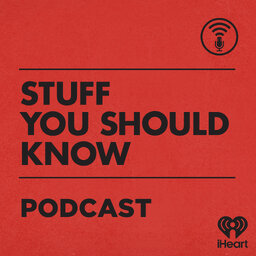How Blue Holes Work
Geologists and biologists have recently realized that the planet’s oceans and coasts are littered with a unique type of ecosystem called blue holes, submerged sinkholes that were once dry caves. They are turning out to be weird and amazing places.
Learn more about your ad-choices at https://www.iheartpodcastnetwork.com
 Stuff You Should Know
Stuff You Should Know


